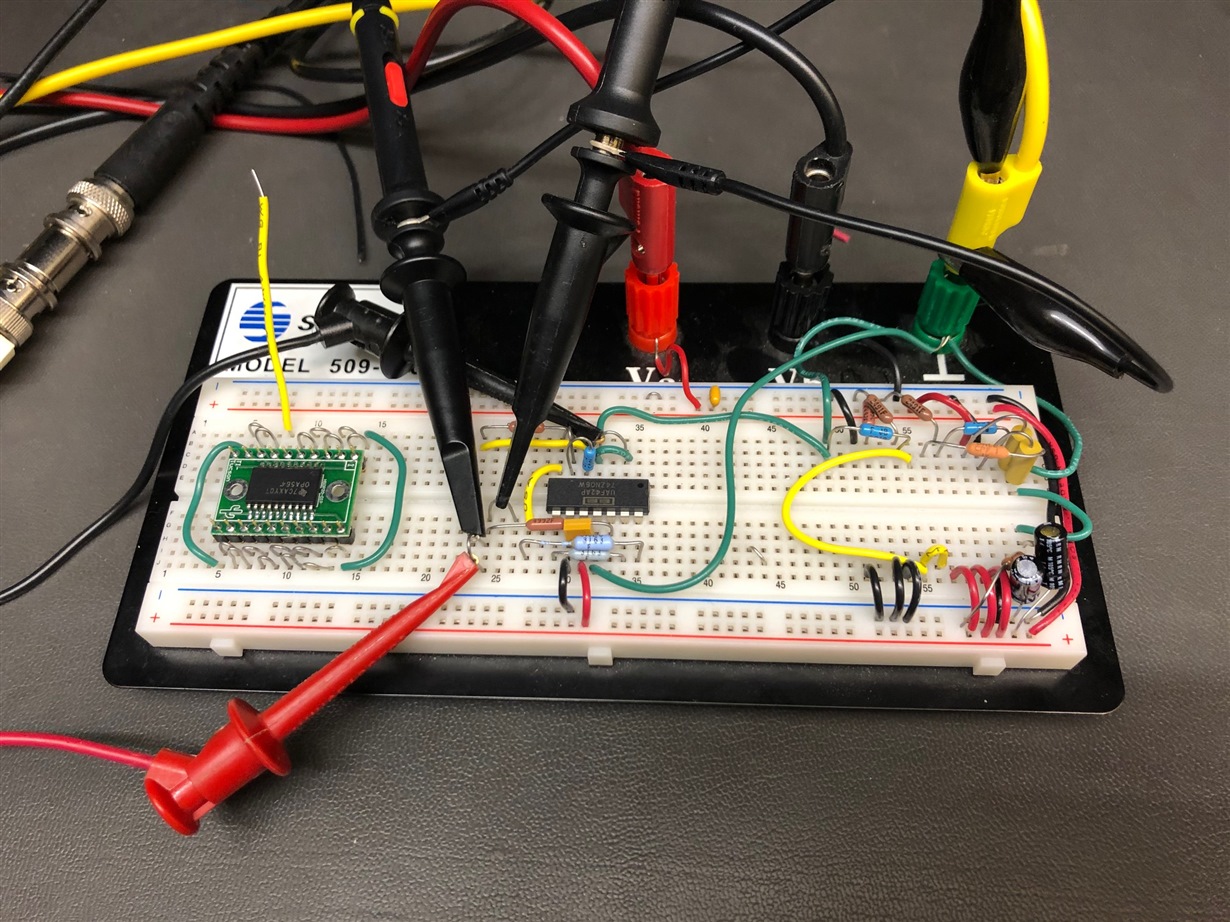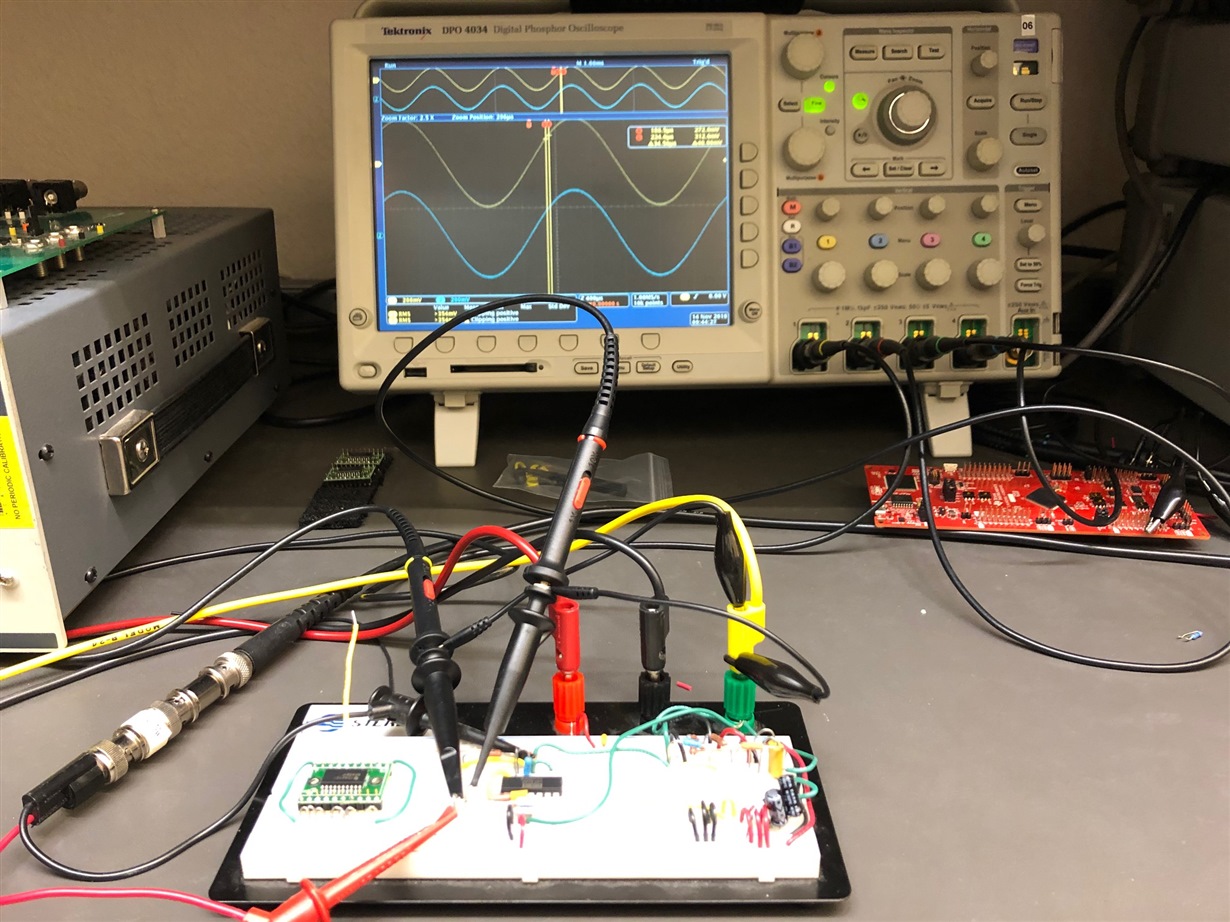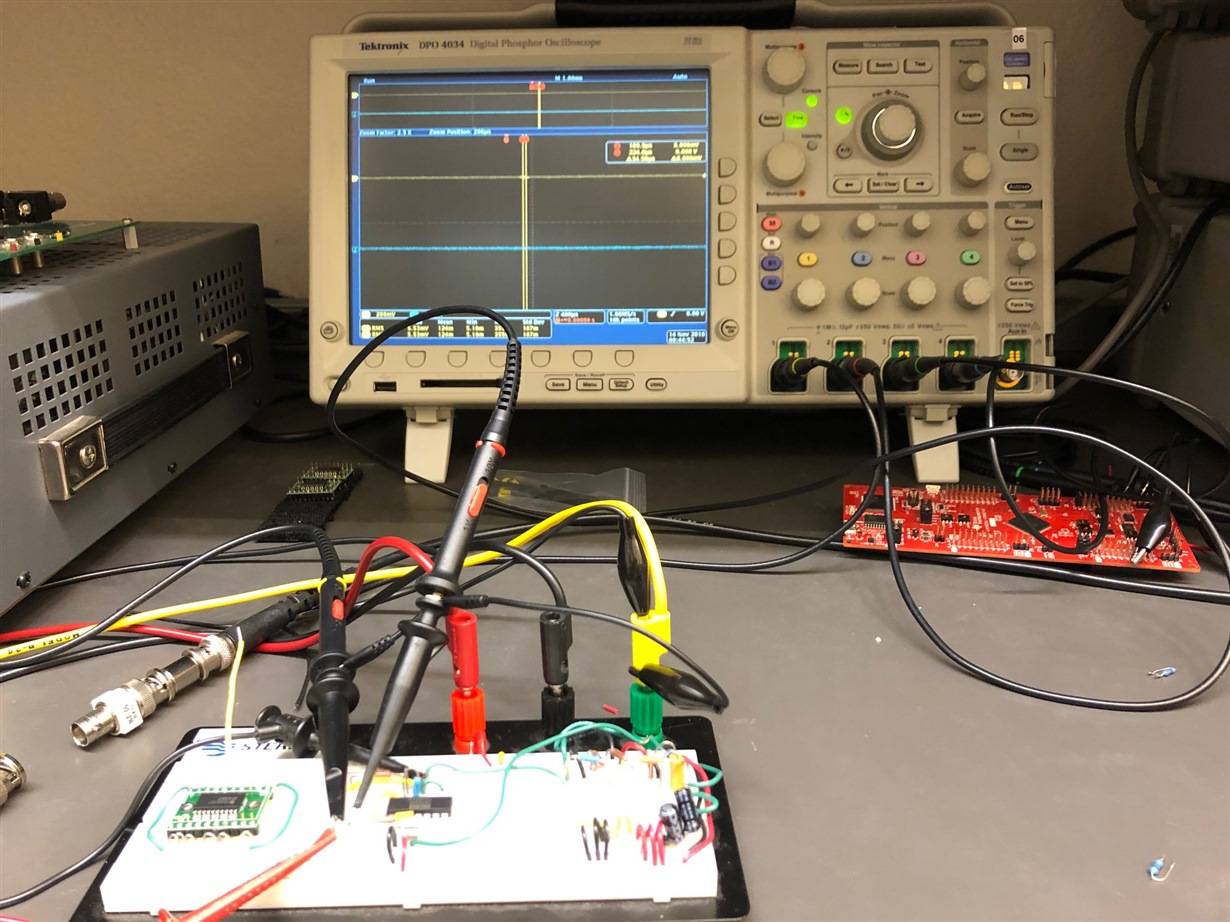Other Parts Discussed in Thread: LMC7660
Hello,
I have designed a band pass filter using part UAF42AP at f = 500 HZ (See my circuit schematics at 1.tiff). The filter is working well and neutralizing unwanted signals at other frequencies. However, while using the spectrum analyzer to evaluate its performance, I noticed that a signal (although weak) is generated by the IC at its center frequency. For example, you can notice this when inputs such as 1 Volts sin 50 Hz (see 3.tiff) or 1 Volts sin 5 KHz (see 2.tiff) were used. In other words, a self generated signal is added/mixed to the signal I am trying to collect at the center frequency, which is problematic. I also found an application data describing how to use UAF42AP to make a sine generator (see sbfa002.pdf). Therefore, I am suspecting that for some reason, maybe me not connecting some of the pins right, this chip is partially performing as an oscillator/sine generator. In addition, the self generated signal at the center frequency is in direct relation with the gain of the filter.
Please advise if any experts can help me resolve this problem.
On a separate, any suggestions on how to reduce the noise when using UAF42AP would be appreciated as well.
P.S. I am using breadboard for this test. The green signal is the output and yellow is the input.
Best Regards,





